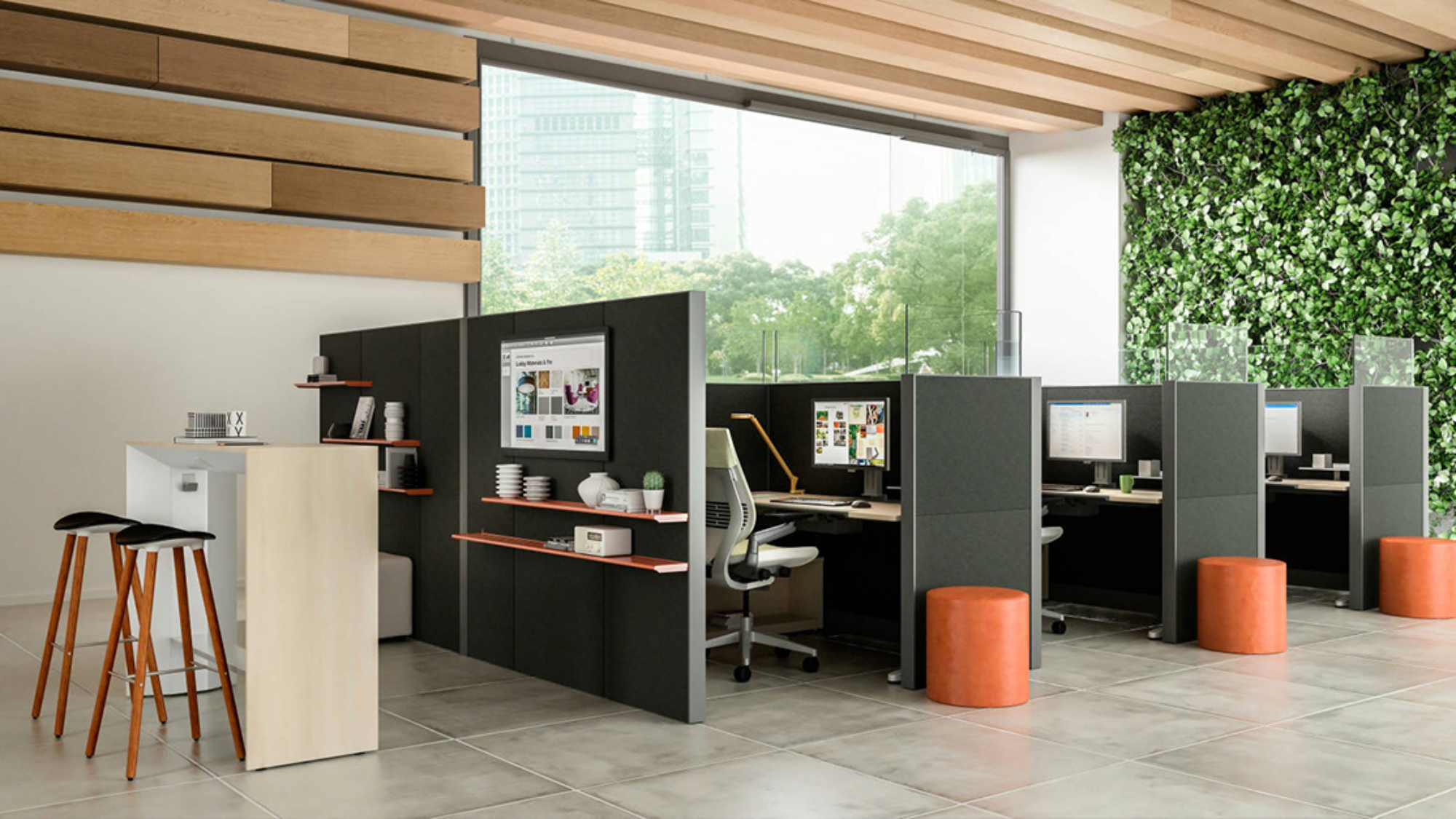At OEC, we are in the business of creating amazing spaces that help companies attract and retain talent. That looks different for each business with whom we work. Throw in the unexpected changes brought in by COVID and those differences become even more pronounced. Now employers have to work harder to create a place where their employees can not only be in-person safely but also flourish. To get four tips for creating safer spaces, we sat down with OEC’s Director of Design, Jenn Galloway, to share how OEC has been able to create such spaces.

1. SANITATION
OEC’s initial response when COVID hit was to send a lot of people home. However, we quickly realized that we work better when we can collaborate as a team, so we needed to get our employees back to the office. One of the first significant changes we made was to set up sanitation stations throughout the office with Clorox wipes, hand sanitizer, disinfectant spray, and thermometers.
We focused on placing these stations in highly trafficked areas first. One such place we wanted them to be readily available was in our conference rooms. We discovered early on that if it is not easy and accessible, then as the user exits a room, they often will not take the time to find cleaning supplies and come back to clean the space. So, making those supplies readily available was important.
We also asked our employees to keep a closer tab on how they were feeling. If they were not feeling well, even if it was not necessarily COVID symptoms, or they think they may have already had it, stay home until you feel better.

2. RECONFIGURE SPACES
For those who can, there are options to turn people around and put screens between them. We recently did an exercise for a client who has 50 offices throughout the US. They asked us to create a design for their offices moving forward that is COVID. It was an enjoyable design to do. We had a lot of creative and unique ideas to have space division and dividers, including how to face people in the office.
There is a delicate balance because people still do not love the idea of really high panels and enclosed spaces. As much of a reality that COVID is, it is not a look that offices are embracing. So, the Open Office is still very relevant with a couple of changes. The goal is to place people so that they are not breathing on each other all day. We want to keep that open field but be healthy.
One of the ways we do that is by facing desks in different directions. For some, this is not always an easy fix to turn someone around. In some cases, they may suddenly be facing a walkway. There are only so many parts of a room you can direct people where they may not have someone walking by them. However, if possible it is a great option.

3. SCREENS & PANELS
There are all sorts of ways you can do screens. It does not have to be the Plexiglas that you see at the grocery store. We have some fabric screens that are magnetic that you can move around, and they are about 70 inches tall. Glass screens are nice because they still allow light to filter. That way, you can keep that open feel, without it being the dark cubicle farm that you see in call centers. You can also bring in various fabrics and do fun colors to reflect your culture by picking splashes and pops of color. You can even create division with plant walls.
Additionally, you can put retrofit screens on top of your existing panels to bring up the height. Recently, there has been such a push for open offices that now, all of a sudden, people do not feel safe with all the open office. Using screens can help mitigate that anxiety.

4. LEVERAGE TECHNOLOGY
While everyone would love to utilize our real estate differently, face out, and have room to move around, the reality is that spreading out is often not an option. You can try to create space for everyone to have their designated workspace so that there is always a minimum of six feet around them. When that space is not available, you can look into using screens.
The occupancy of conference rooms, for example, is something to consider. If you have a conference room that could fit 10, reduce that number to five, or even three. That is an easy thing to fix, especially if you can video conference. It is not uncommon to have a meeting where someone is video conferencing so that you can keep the number in your conference room smaller. If you ultimately do not have the space available, you might consider having some of your workforce work from home. Using a rotating schedule where employees are in the office some days and at home on others can be extremely helpful.
At OEC, we are optimistic about the future. While we expect working from home is here to stay, we believe people will truly appreciate bringing a team together and emphasize the importance of doing so in a physically and mentally healthy space.
Receive our Newsletter
To receive our newsletter, including new editions of spaces and other digital content, fill out the form below:



